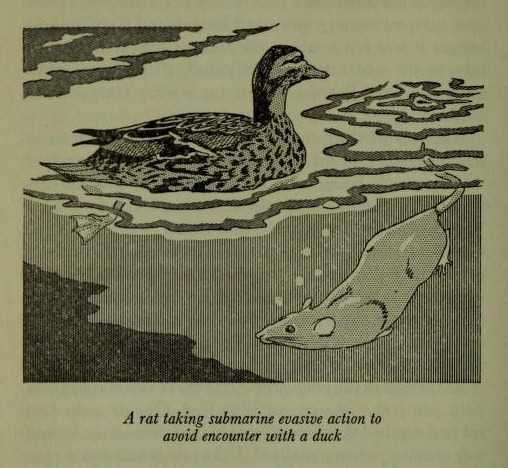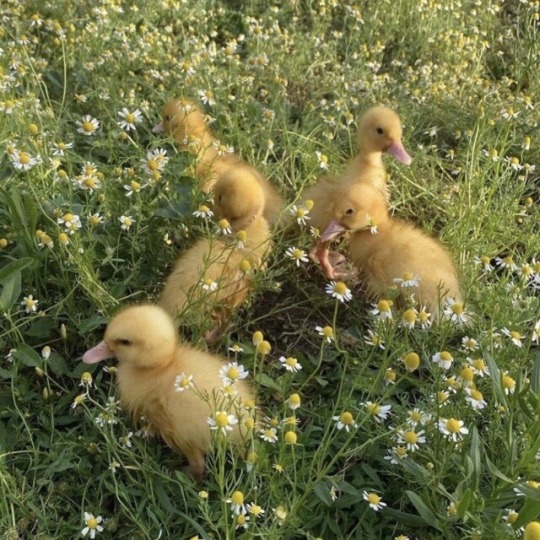Text
The thing i love about slovak (and other slavic languages) is how they already have the "(derogatory)" and "(affectionate)" function already built in. Example:
Had - snake
Hadík - snake (affectionate)
Hadisko - snake (derogatory)
Like yes!!!!! Amazing function thank you!!!!
(these thing refer to size also, but it depends on the context imo)
25K notes
·
View notes
Text
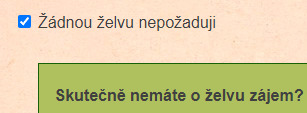
Najdi si štafle a poď mi to říct do očí, ty želvyprostej hajzle
170 notes
·
View notes
Text
I've got one thing to say
Fuck anatomy and histology is on a thin fucking ice, too
Love, Krisťa
0 notes
Text
Random animal facts
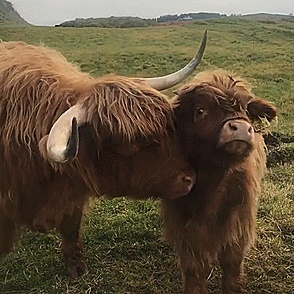
Cows have no upper front teeth. However, in total, they have 32 teeth and chew about 40-50 times a minute.
Bones of the garfish contain biliverdin, a tetrapyrrolic bile pigment, which causes them to be green in color.
The frontal lobe of horses is very small compared to human one. That means they cannot hold grudges, plot revenge or for example try to win.
Bambiraptors had enlarged cerebellum, which may indicate higher agility and intelligence than any other related dinosaurs had. It is actually a dinosaur with the largest brain for its size that has ever been found, however the brain size may be due to the age of the discovered juvenile individual.
Camels are very social animals that live in herds led by a dominant male (other males form bachelor herds). Camels greet each other by blowing air into their faces. However, during rutting season, the males show aggressive behaviour.
#animals#biology#nature#cows#camels#dinosaur#dromaeosaur#bambiraptor#paleontology#zoology#fossils#ruminant#cow#camel#horse#fish#wildlife
103 notes
·
View notes
Text
Daily fish fact #216
Longfin damselfish!
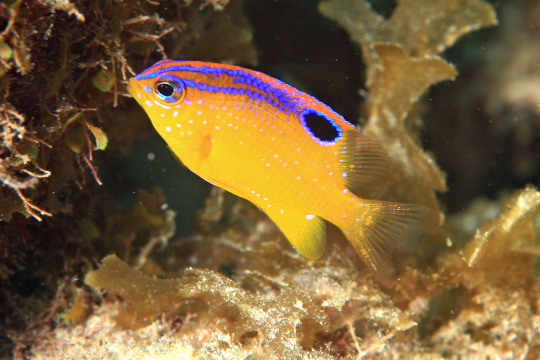
These damselfish have actually been found to domesticate other animals! They will guard swarms of mysid shrimp that live in algae, not eating them despite consuming similar invertebrates. The waste products of the mysid shrimp fertilise the algae, which the damselfish then feed on! They will aggressively defend their algae farms from other fish, so the species' relationship is mutualistic at least and domestication at most.
294 notes
·
View notes
Text
Norman cob
Norman cobs are mid-sized horses with conformation of a robust Thoroughbred - they have a square overall profile and a short strong back. The head is well-proportioned, with small ears and a straight or convex facial profile. These horses have thick and muscular necks, deep chests, pronounced withers and broad shoulders and strong hindquarters (not as much as in other draft breeds, though). The legs are short and strong, with a thick bone. Traditionally, the tail was docked, until 1996, when the practice became illegal in France. Norman cobs have a lively trot with long strides, which was achieved via selective breeding. Norman cobs stand between 155-168 cm.
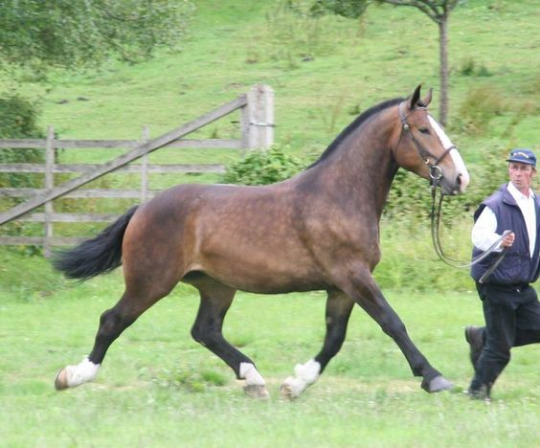
Now something about coat colors. Norman cobs are usually chestnut or bay, or seal brown (in the breed registry, it's called black pangaré, however, genetically, these animals are brown, not with pangaré markings). Bay with white markings are the most popular.
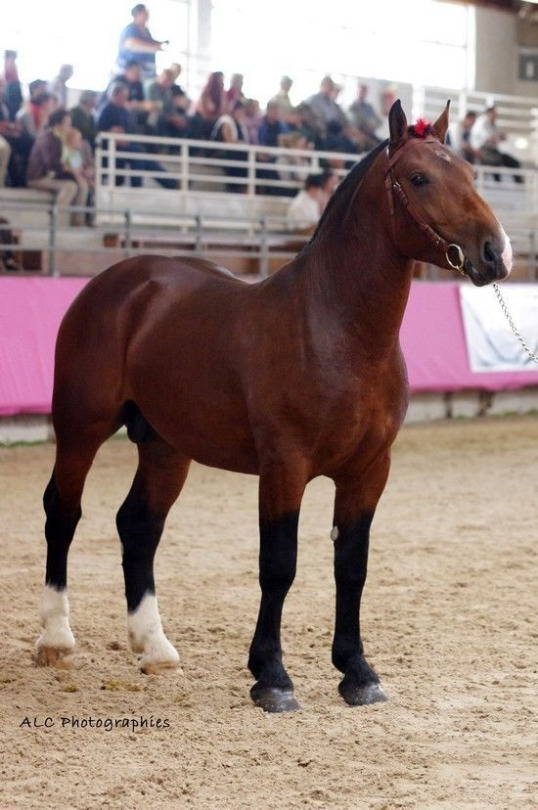
Norman cobs come from the Normandy region in France. Their ancestors were small horses that lived in Normandy - bidets. These were bred by Romans to draft mares to produce war horses good both for pulling and riding. Over the centuries, blood of other breeds was added - Arabians and Barbs, but also Gelderlands, Norfolk trotters and others. Because of Thoroughbred ancestry, Norman cobs are energic and athletic and they mature sooner than other draft horses. In the 18th century, there were two studs founded - Le Pin and Saint Lo.
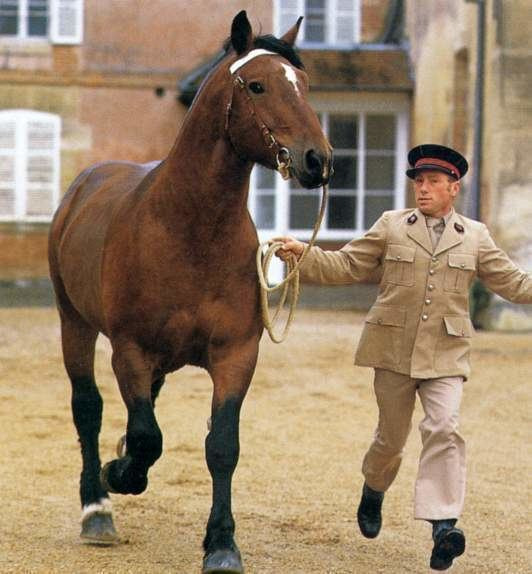
This multi-purpose breed is calm, willing and hardworking, and very durable. Cobs show great endurance when ridden and are very hardy. They can be used for most equestrian disciplines and they are particularly well-suited for vaulting.
#horseblr#animals#biology#cute#horseriding#equine#equestrian#horses of tumblr#horse#riding#equeuestrian#draft horse#horse breeds#bay horse
11 notes
·
View notes
Text
Banteng
Bos javanicus
Banteng is one of three (or four) wild cattle species, found mainly in the forests of Southeast Asia. The largest populations of bantengs occur in Java, Cambodia, Borneo (Sabah) and Thailand, but they are also present in Kalimantan and Myanmar and there are also feral populations in the Northern Territory of Australia. It's possible they are extinct in India, Bangladesh and Brunei. The herds consist of 2-40 individuals and of a single bull, usually.

They are similar to cows, with body length bewteen 1,9-2,25 metres. Wild bantengs are usually larger and heavier than their domesticated counterparts - the domesticated population consits mainly of the Bali cattle. Because of the unusual length of thoracic vertebrae in bulls, the back is elevated and it looks as if the animal had a hump. There is present an extensive sexual dimorphism in bantengs - bulls have long, slender horns with sharp tips, arcing upwards and slightly forwards; cows' horns are shorter, tightly curved and pointing inwards at the tip. Speaking of sexual dimorphism, adult bulls are large and sturdy and usually of dark brown or black color (however, sometimes, the bulls can retain their brown color, ocassionally with white spots); the cows, on the other hand, are thinner and have a light brown or red coat. The juveniles are reddish brown. Furthermore, females and young animals also have a dark line running across their backs and aged bulls can turn gray. Another distinctive thing about bantengs' appearance are their white to light brown underparts, white legs and patches on their rumps, light colored faces and black snouts.
Bantengs are active both during day and night. These herbivores usually feed on grass, sedges, leaves, fruits et cetera. They can go without hydrating themselves for a really long time, however, if possible, they drink a lot, usually from standing water. We don't know much about reproduction of bantengs, but it's expected to be similar to one of taurine cattle. The gestation period is 9-10 months long and a single calf is born. The calves are suckled up to 16 months, however, some cows continue nursing until they give birth to another baby. Bantengs live for as long as 26 years. Another interesting fact is that bantengs have a symbiotic relationship with Torresian crows, that feed of their ectoparasites (possibly ixodid ticks) - and it's important because it's the first known symbiosis between a native bird and a non-native mammal, and it took 150 years to form.

Bantengs can be bred to other bovine species, such as cows and water buffalos, however, this can be a threat to banteng population. Because of that, Bali has banned other cattle varieties on the island.
Now, the "vet med" part. Bantengs are hosts to several endoparasites (liver flukes, intestinal worms and Paramphistomum species) and ectoparasites (usually some tick species, even though bantengs are usually immune against them (and tick-born diseases).) Bantengs are suspectible to bovine malignant catarrhal fever (which is usually fatal and animals that survive are infectious for the rest of their lives and may relapse). Another illnesses that have caused deaths in captivity are black leg or quarter ill, and bovine viral diarrhoea. There is also a skin disease seen only in bantengs - bali ziekte. It begins with a dry eczema, that turns into a necrosis and lacerated mucous membranes in the affected area.
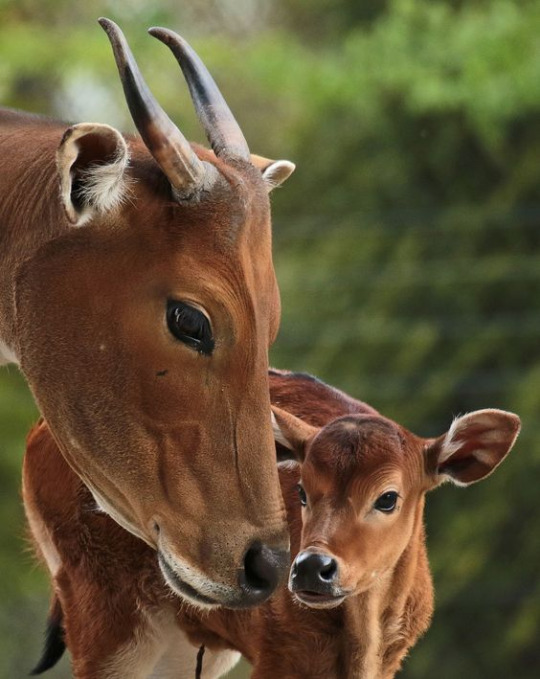
5 notes
·
View notes
Text

Первое солнышко. Illustrated by Tatyana Kapustina. 1987.
125 notes
·
View notes
Text
Red friesians
I remember reading about these when I was like eleven - and I was confused. Because for years, I've been told that there are only black friesians (and the same went for lipizzaners and kladrubers; only black and eventually gray animals should have been possible).
So, how come that we can ocassionaly see a purebred friesian of red color (so called fox friesian)?

To make it as simple as possible - coat colors are caused by genetics. A gene is made of two alleles. Let's say we have an animal with two identical alleles (AA or aa) - that animal is homozygous. If the trait is dominant, then the individual is considered to be homozygous-dominant (AA). And if the trait is recessive, then the individual is considered to be homozygous-recessive (aa). We also have heterozygous individuals (Aa), that means there are two different alleles. In case that the trait is determined by complete dominance, only the dominant allele will be expressed and you won't be able to see the recessive one. However, we also have many different dominance schemes and then the results would be more complex.

Luckily, we don't really have to do some insane mental gymnastics when talking about black and red horses. That's because of the complete dominance I've spoke about before - black horse is either EE, dominant-homozygous, or Ee, heterozygous. And a red one is ee, recessive-homozygous. Now, if you breed two heterozygous blacks (red carriers), there's a 50% chance of getting a heterozygous black foal. And also a 25% chance of a homozygous black and finally, a 25% chance of a red foal. So it's kind of rare, but not impossible.

Horse genetics are a fascinating topic (at least for me). So you can expect more posts about them <3
#horse genetics#biology#equine#science#genetics#equestrian#friesian#red horse#blackhorse#animals#horseriding#horseblr#lipizzaner
138 notes
·
View notes
Text
Neigh
I'm pretty sure that the most bizarre thing about me is the fact that when I was like four or five years old, I decided that I'll become a veterinarian one day.
And I rolled with it. Now I'm here, preparing for my first semester of vet school.
My name's Krisťa.
My only character traits are being a horse girl and running in forests. (and my love for tall goth women) My dad says I look like a hippie auntie. I pick herbs, do witchcraft and ocassionaly art. And I also miss my blogging years, so I decided to create this tumblr. I have no idea what I'm going to post here, or how often or in which language protože co si budem, moje angličtina pokulhává tak moc, že jí jednoho dne budu muset rentgenovat nohy.
Have a nice day and don't forget to pet some animals today!

3 notes
·
View notes

